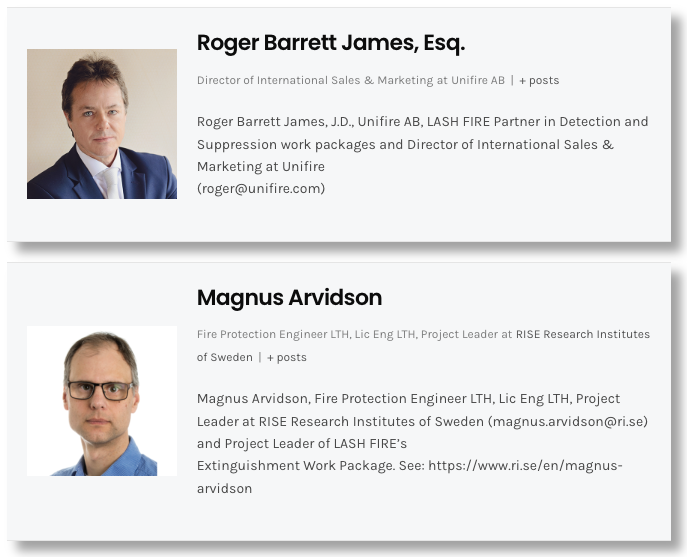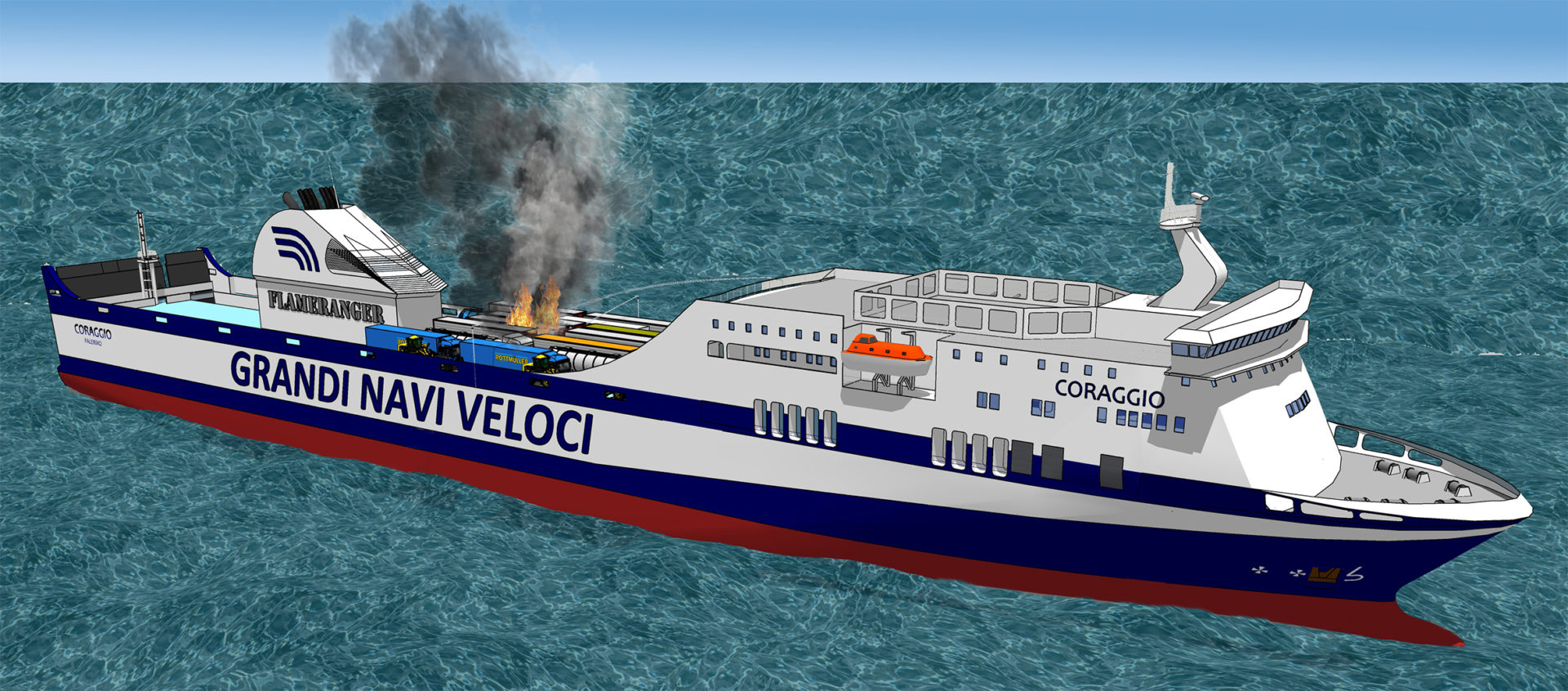
Weather deck fire monitors: LASH FIRE insights in light of anticipated new SOLAS requirements
2023-02-23 by: Roger Barrett James (Unifire AB) and Magnus Arvidson (Research Institutes of Sweden)
New SOLAS requirements are expected to be adopted, which will require that weather decks on ro-ro ships be outfitted with fixed, water-based fire monitors. This requirement is expected to apply to both existing and new-build ships.
This article sets out preliminary key insights from the LASH FIRE (www.lashfire.eu) project in terms of fire monitors for the protection of ro-ro and ro-pax weather decks.
LASH FIRE is an EU-funded, international research project aiming to significantly reduce the risk of fires on board ro-ro ships. The project began in September 2019 and runs through August 2023. Among other fire-safety aspects, the project has been conducting research, development and testing of remote-controlled and autonomous fire monitor systems for the fire protection of weather decks.
Findings and recommendations from the project will inform the IMO for the improvement of safety.
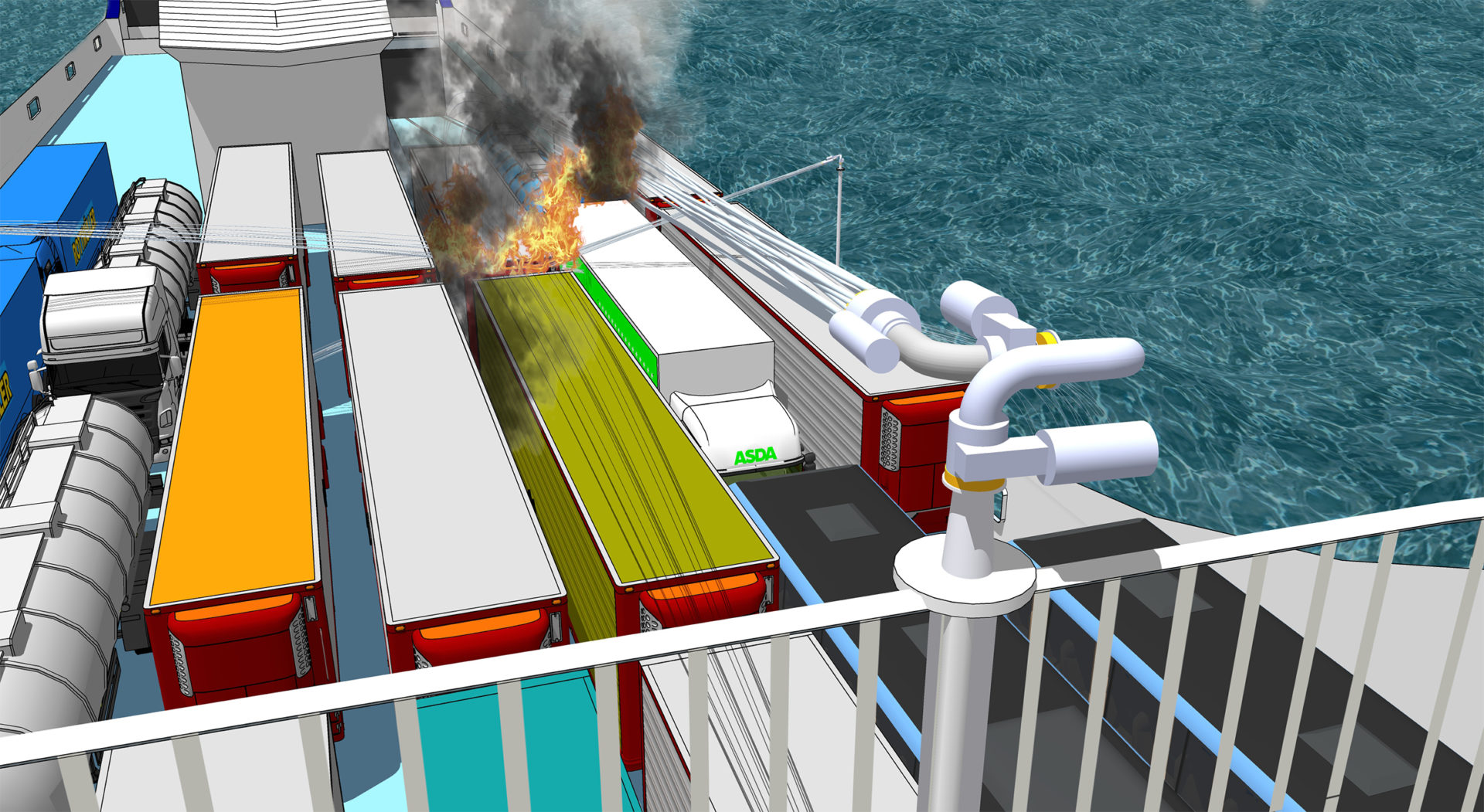
The LASH FIRE objective is to develop and demonstrate feasible and effective system solutions for weather deck fire suppression. The project mandate states: ‘Quick system activation, safe controlling, high coverage and fast fire suppression are fundamental criteria for the systems, which also need to sustain the harsh environmental conditions.’ The development work should additionally be based on the most recent technological advances in the field; in other words, a state-of-the art review is required, identifying the newest technology, ideas and features.
The study’s performance objective is that any fire on the weather deck can be suppressed, meaning that the fire is contained to one or a few vehicles and that adjacent boundaries are cooled to limit structural damage.
In this context, LASH FIRE has been developing and testing both remote-controlled and fully autonomous fire monitors for weather deck protection, which meet these and other project criteria.
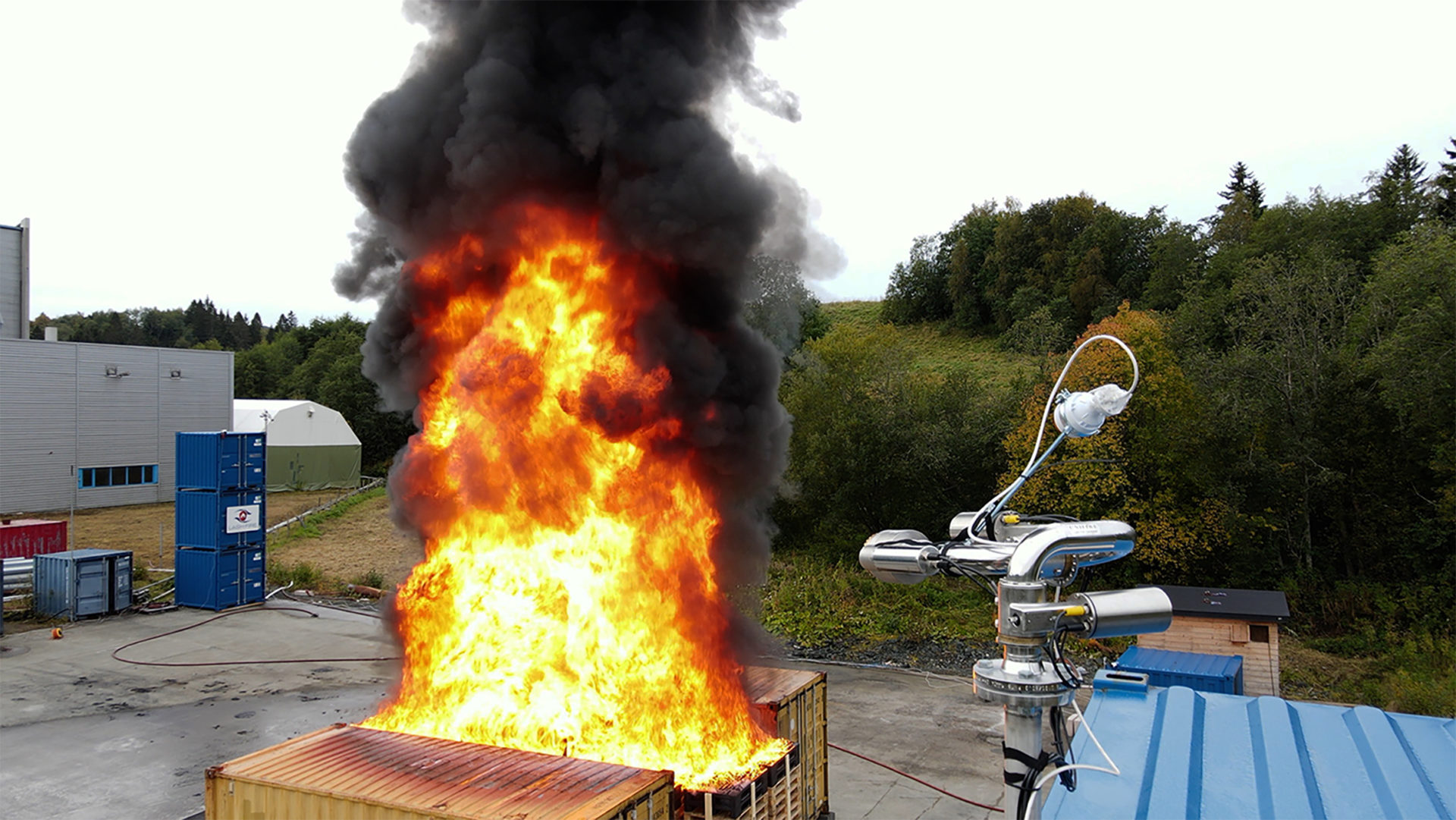
Based on extensive research and development thus far, the principal requirements proposed by the LASH FIRE project regarding weather deck fire monitors are expected to be, among others, as set out below.
Two-inch remote control fire monitors, made of stainless-steel 316L or other material appropriate for weather decks, and that each monitor be used at a relatively modest flow of 1,250 litres per minute at 5 bar. This has been shown to meet the fire-suppression objectives and also keeps the total system costs down by minimising the size and weight of system equipment, such as pipes, valves, pumps, etc.
All areas of the ro‑ro weather deck should be covered by the streams of water, foam or other agent from at least two individual fire monitors, which are strategically mounted on opposing sides of the ro‑ro weather deck (either 90° or 180° of each other) to give them opposing suppression angles. Dual coverage substantially increases fire-suppression efficacy and also increases the chances of successful suppression in windy conditions that are often present on weather decks.
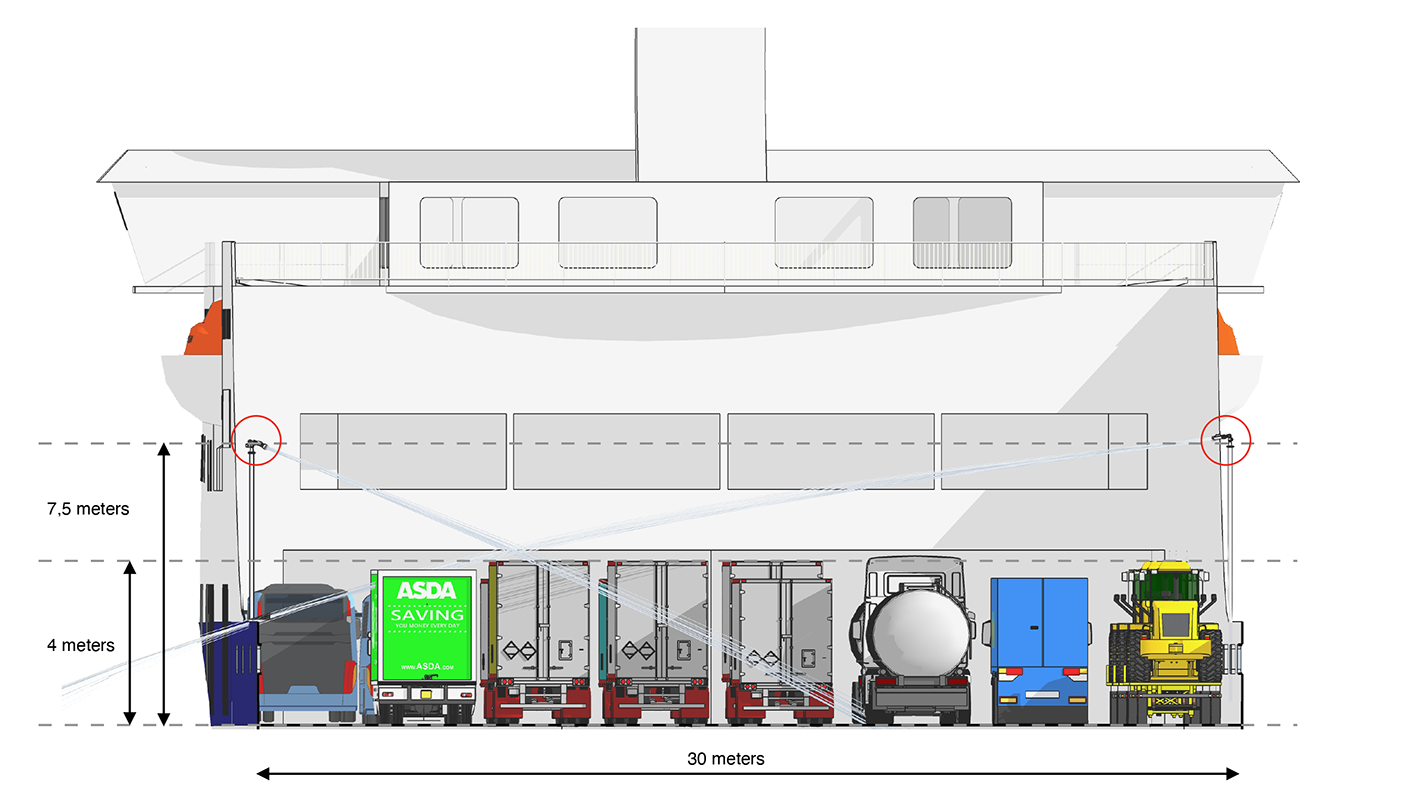
Individual fire monitors should be able to be manually activated and be able to remotely control their rotation, vertical movement, nozzle spray angle and the opening and closing of the valve(s).
The monitors should be placed high up – at least 3.5m above the top of the cargo – to give them a good suppression angle. Because the monitors are required to be remote controlled, the mounting locations are quite flexible as they do not need to be physically accessible by the crew in order to be controlled.
Fully autonomous systems have been demonstrated to be able to detect a fire and accurately locate it and commence suppression in under 15 seconds. Autonomous and semi-autonomous systems may bring substantial benefits in terms of rapid intervention at a relatively low additional cost, and they may therefore be considered for use on weather decks.
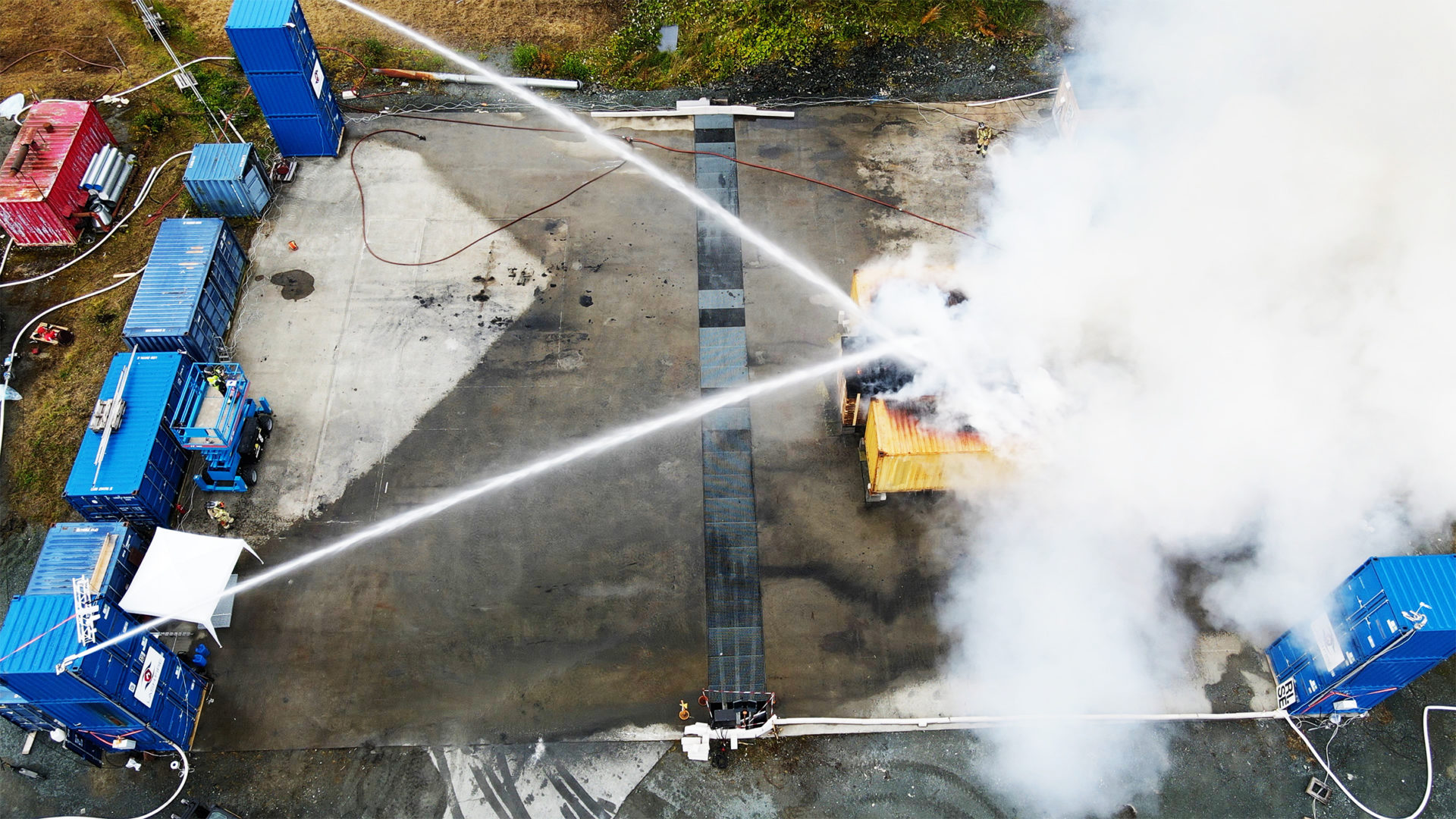
Large-scale fire performance validation tests of selected fire monitor systems were conducted at a test facility at RISE Fire Research AS, Trondheim, Norway in September 2022. The tests were conducted in an outdoor area measuring 40m by 30m, representing a section of a weather deck.
The tests simulated a freight truck trailer fire with cargo containers on both sides and consisted of a main array of stacked idle wood and plastic pallets, which was partly covered by a roof. Parallel with and 0.5 m to the sides of the main array, 20-foot cargo containers were positioned to mimic the compactness of vehicles, trailers, and other cargo on a weather deck.
The fire source consisted of 224 pallets (192 wood and 32 plastic pallets), arranged in 16 stacks, i.e. eight stacks along the length and two stacks along the width, with each stack containing 14 pallets along the height (12 wood pallets with two plastic pallets on top).
Three 2in remote-controlled fire monitors were positioned at a height of 7.2m above the ground, and tests were conducted with one monitor and two monitors from various angles.
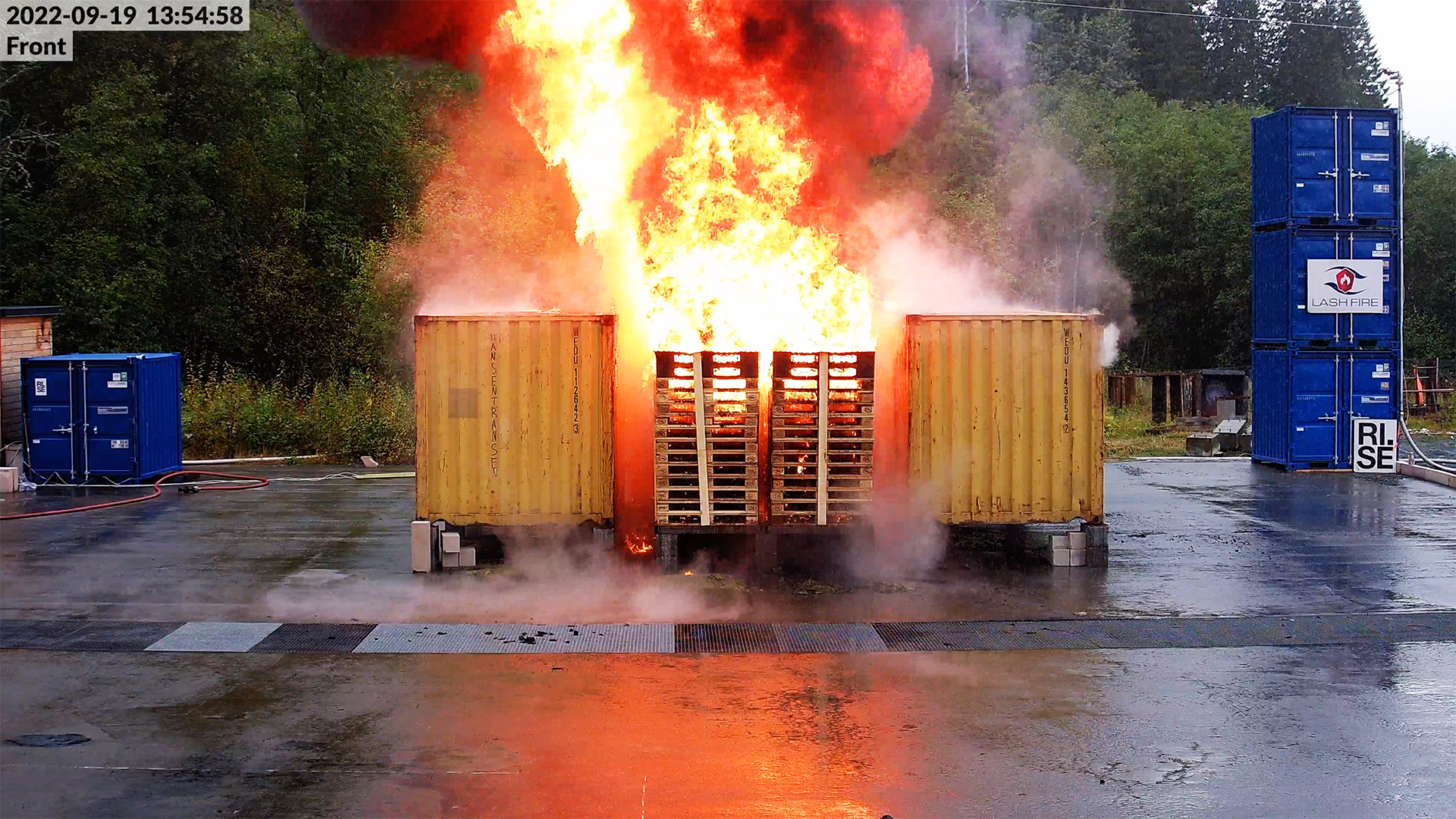
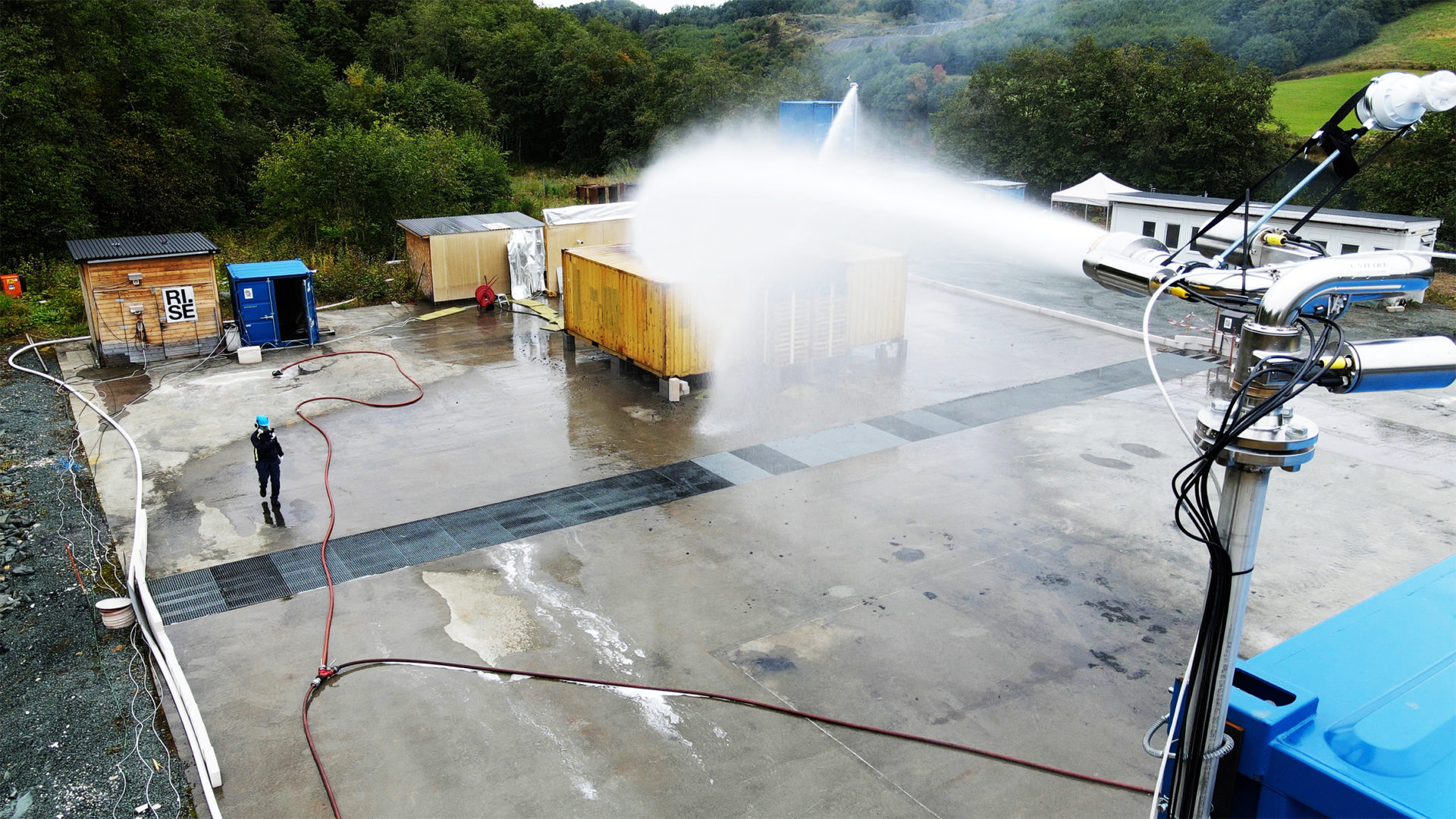
During the tests, the fires were allowed to develop until flames were visually observed above the top of the array. Thereafter, either a 30-second or 300-second delay time was applied before the application of water was initiated. The shorter delay time was designed to simulate rapid activation by an autonomous system, while the longer delay time simulated manual activation and remotely controlled operation by the ship’s crew.
These validation tests demonstrated fire-suppression performance with the fire monitor system concept described in design and installation guidelines drafted prior to the tests. As mentioned, the system concepts in these guidelines are built on a philosophy with strategically positioned, small-sized (2in), remote-control fire monitors with moderate water flow rates.
Under normal weather conditions, the objective is that a fire starting at any point on a weather deck should be reached by two streams of water to provide prompt fire suppression. This fire-protection objective was illustrated in the tests.
Abnormal weather conditions, such as heavy wind, may influence the possibilities to reach a fire from two application angles. This scenario was simulated by using a single fire monitor in the tests. It was demonstrated that even a single fire monitor can provide fire suppression given that sufficient water reaches the fire, although suppression from two monitors showed significantly greater suppression efficacy.
The time from the start of a fire to the application of water is a critical factor as fires on a weather deck may grow in size and intensity extremely quickly, and ro-ro ships typically must be self-reliant on their own fire-safety systems. It was demonstrated that an early application of water prevents a fire from growing large and provides efficient cooling of surrounding trailers. When the application of water was delayed, the fire size was significantly larger in size but was still suppressed.
Video footage from the large-scale fire suppression tests can be viewed at https://youtu.be/-qFWKBAGraE.
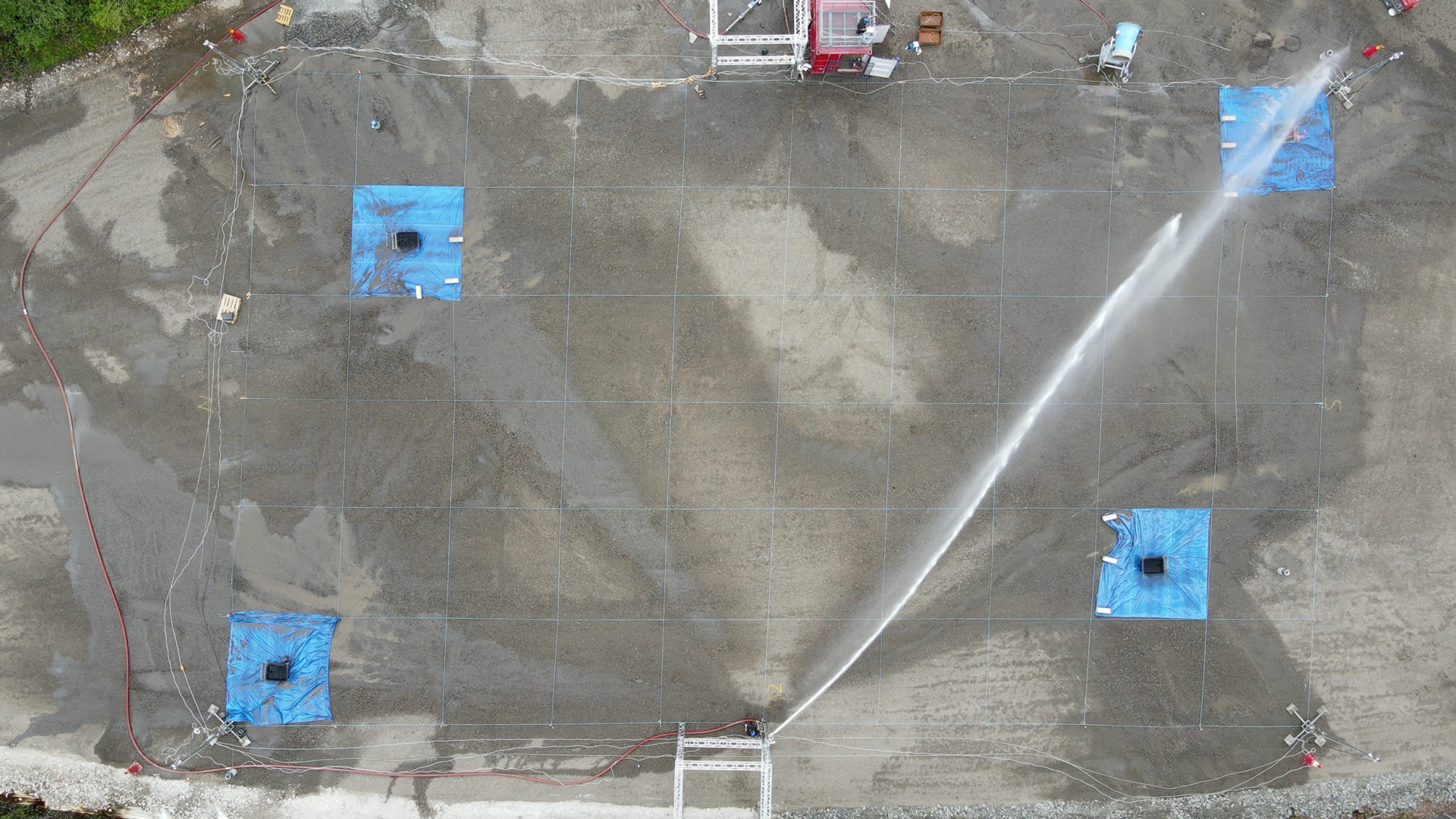
The LASH FIRE project has also been developing and testing for weather deck protection fully autonomous fire monitors, also sometimes referred to generally as autonomous robotic fire-suppression systems.
Autonomous fire monitor systems combine one or more flame-detection technologies with advanced electronic hardware and software that analyse data from the detectors and then intelligently and autonomously guide the fire monitor to suppress the fire, as well as open and close the monitor’s valve.
Although these systems are fully autonomous, a human operator can take remote control of the system at any time, regardless of whether or not the autonomous function has commenced. In this way, autonomous systems offer not only extremely fast reaction time – a critical factor to successful suppression – but also provide all the benefits of a standard remote-controlled fire monitor for human operation from a safe distance.
Fire testing conducted in June 2020 in Borås, Sweden, demonstrated that an autonomous fire monitor system is capable of taking in signals from fire detectors and, upon fire detection, determining the location of the fire, open the monitor’s valve, and accurately and autonomously aiming the water stream to suppress one or multiple fires.
In the tests conducted, the system was able to discharge water on the flames in under 15 seconds from fire ignition. Video footage from these tests can be viewed in the video below.
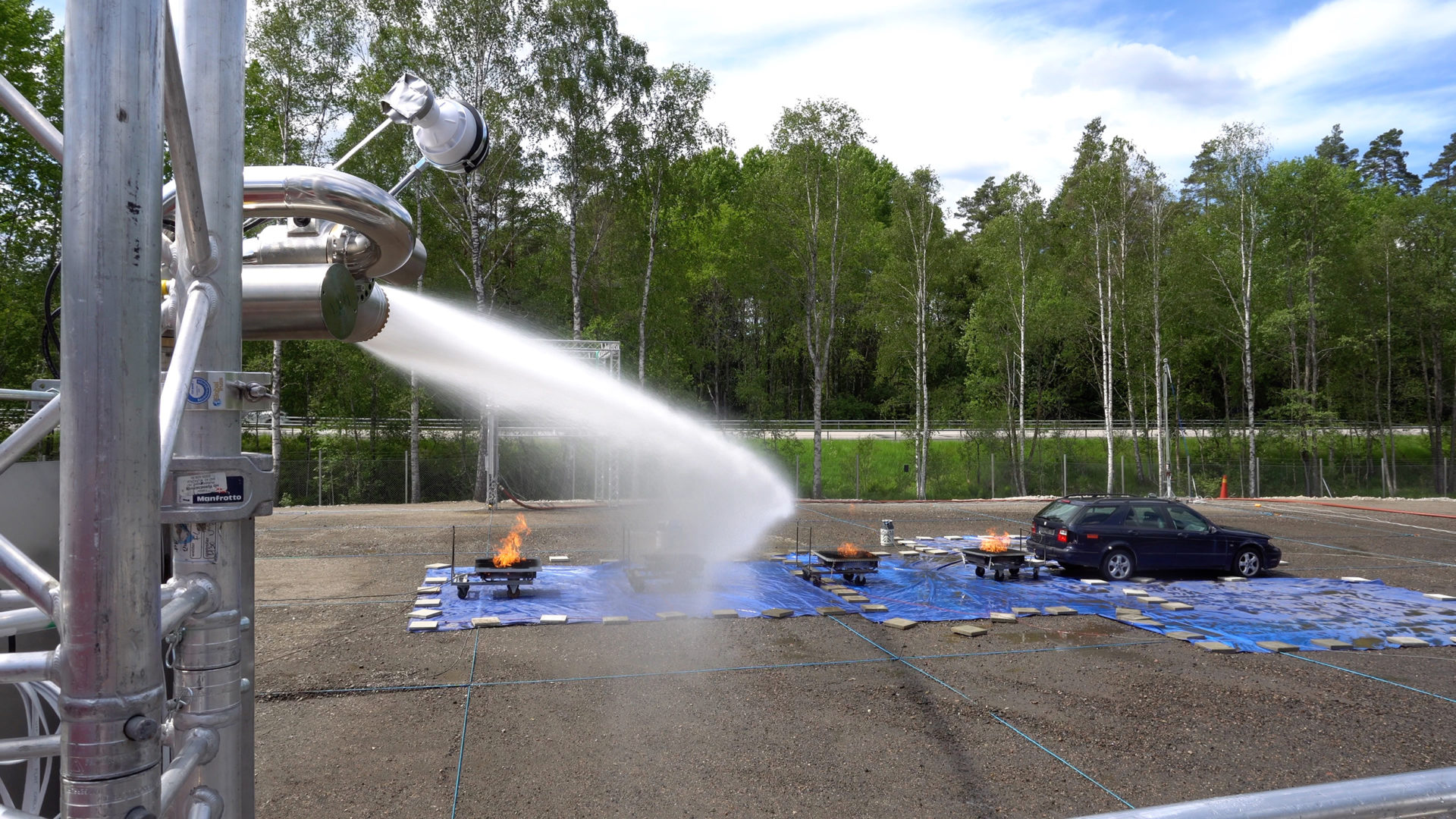
Autonomous robotic fire suppression systems provide the benefit of extremely fast-reacting
fire suppression, while allowing a human operator to take over by remote control at any
time. The additional cost for autonomous functionality is relatively low because—although
there is some additional cost for cabling, electronic hardware and software—the fire monitor
system can, if planned in advance, take advantage of the weather deck fire detectors that
are also expected to soon be required by the new SOLAS regulations.
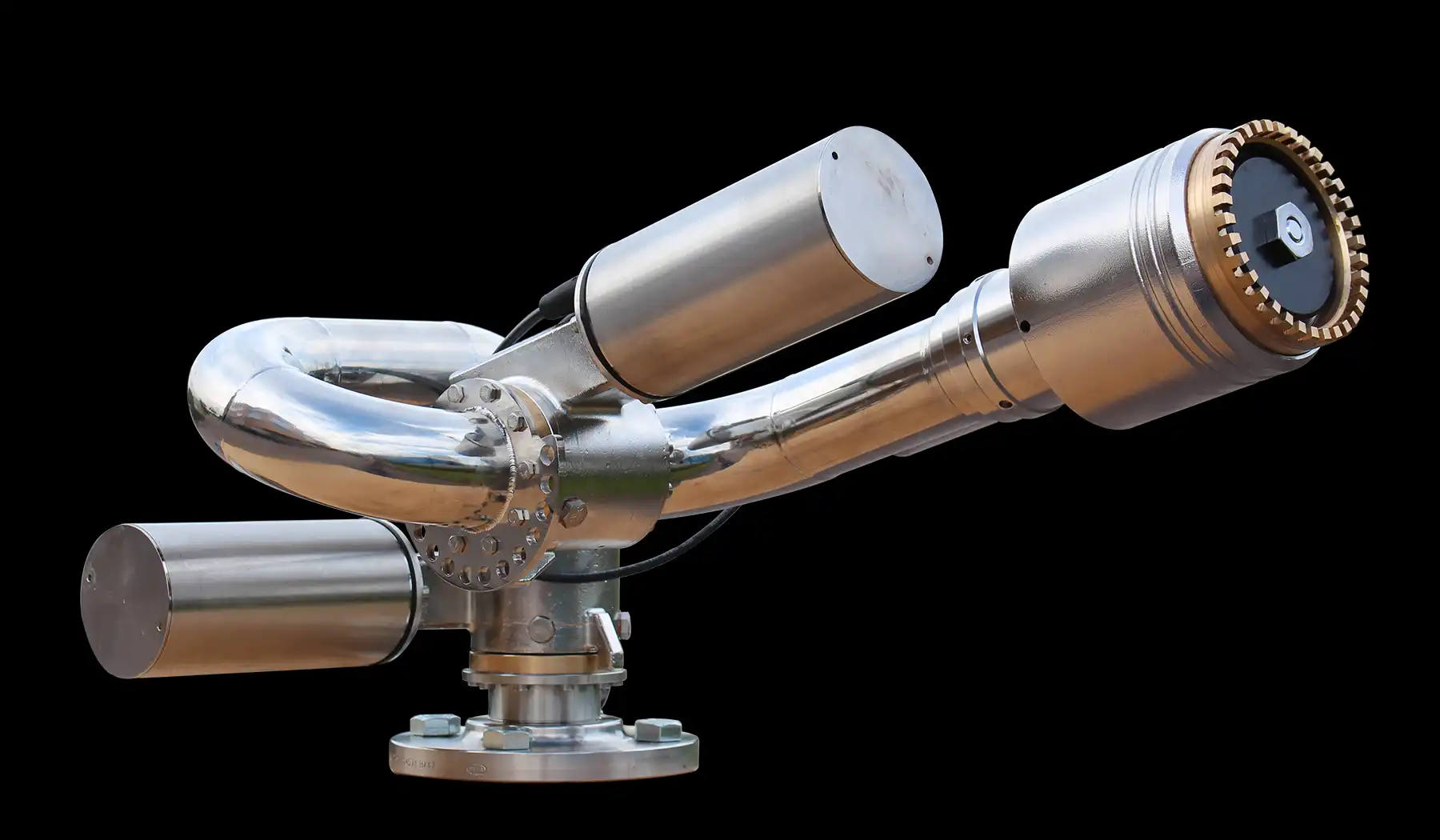
Conclusions
The LASH FIRE project’s study of fire detection and fire suppression on ro-ro weather decks conclude that: i) 2in monitors, each with a modest flow of 1,250 lpm at 5 bar, are recommended and have been demonstrated to be able to suppress a large fire, while minimizing costs; ii) any area of the weather deck should be covered by two fire monitors from opposing angles; iii) all fire monitors should be capable of being remote controlled; iv) the fire monitors should be placed up high to give a good suppression angle; and v) autonomous robotic fire-suppression systems have been demonstrated to rapidly detect and locate a fire and aim the water stream at and around the fire, and such systems may be considered and may bring substantial benefits in terms of rapid intervention for a relatively low additional cost.More and developing information can be found at www.lashfire.eu

